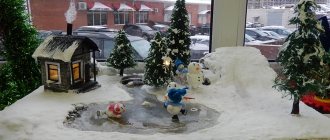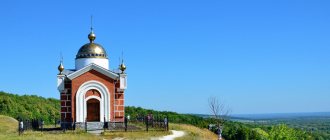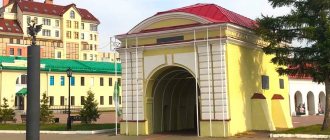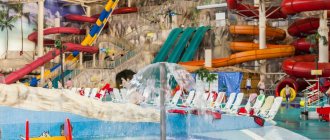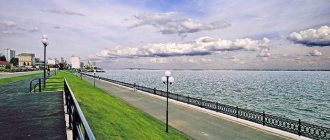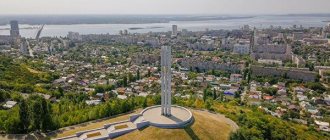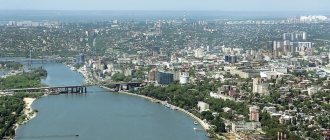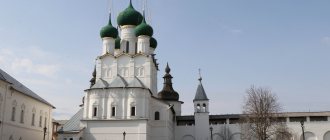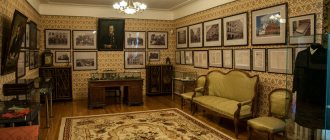The Rostov region is the homeland of the Cossacks and the land of the steppes, stretching along the banks of the mighty Don. The region, from which the hot southern territories of Russia begin, is in sixth place in the country in terms of population: according to 2022 information, 4,203,634 live here. In terms of size, the region is “in the middle”: the area is 100,967 km², which puts it at 33 position of the all-Russian rating. The Saratov region has approximately the same area, 23 times more in the Krasnoyarsk Territory and 27 times less in the Republic of Ingushetia. Since 1998, the population of the region has been steadily decreasing: over 20 years the drop was 285,000 people.
Architectural beauties
They begin their acquaintance with the Don capital in the city center. It is not for nothing that it is called an open-air museum of merchant architecture.
Bolshaya Sadovaya Street
If you only have a couple of hours to visit Rostov-on-Don, go for a walk along Bolshaya Sadovaya Street. Rostov's Broadway is both a chic promenade and a collection of the most beautiful mansions in the Don capital.
Bolshaya Sadovaya Street
© Julia Alisova
Bolshaya Sadovaya is one of the main streets of pre-revolutionary Rostov-on-Don. Its history begins in 1781, and at the beginning of the 19th century, gardens were laid out in the area of the avenue, hence the name.
The improvement of the most popular promenade today began in 1864, when a road was laid here, water supply and kerosene lighting were installed.
A little later, multi-seat carriages began to run along Bolshaya Sadovaya - an analogue of modern buses, and in 1901 the first electric tram was launched.
A construction boom on the avenue occurred at the beginning of the 20th century. The area between Voroshilovsky and Budennovsky Avenues was built up especially quickly; this part is still considered one of the most beautiful in the city. Elegant mansions bear the names of their owners, local merchants, and many were designed by popular architects.
Mansion of Margarita Chernova
One of the most notable is the mansion of Margarita Chernova. This beautiful house with a turret, and especially its legend, are known to every Rostovite.
House of Margarita Chernova
© Masha Malinovskaya
It is like a declaration of love from a patron of the arts to an artist. The mansion was built in 1899, according to the design of the architect Nikolai Doroshenko.
The owner was an actress and socialite, famous in the city, Margarita Nikitichna Chernova. The customer is a merchant from the noble Paramonov family.
It’s hard to believe, but at the time of construction the house was located on the outskirts of the city. Later, during the development of the avenue, it was a popular mansion in Rostov-on-Don.
The first floor, as was customary in the merchant capital, was given over to trading houses, but on the second there were the living quarters of the hostess. Balls, receptions, and musical concerts were held here. It is known that all rooms were richly decorated with stucco and frescoes. Nowadays, the “house with a turret” is a monument of cultural heritage.
City Duma
Just like the city council building. It was designed in the same 1899, but the architect was Alexander Pomerantsev, a famous architect in the empire.
City Council Mansion
© Julia Alisova
The City Council mansion is one of the most beautiful and most famous city attractions.
The construction cost more than half a million rubles - a colossal figure for those times.
However, the money was not spent in vain - the administration of Rostov-on-Don became one of the most beautiful both in Tsarist Russia and in our time.
Its Baroque façade, with stucco moldings, turrets, tiered divisions and decorative battlements, is noticeable from afar. Especially in combination with the bright colors that the City Council building acquired after the last restoration.
House of the Martyn brothers
Another diamond of Bolshaya Sadovaya that definitely needs to be seen is the house of the Martyn brothers. This is one of the most beautiful representatives of merchant Rostov-on-Don of the 19th century.
House of the Martyn brothers
© Julia Alisova
Its red brick lines are impossible to miss. The house was built in 1893 for a British citizen, Ivan Martyn.
The Martyn family was considered representatives of the merchant nobility; they owned factories and factories. The successor of the family, Georgy Martyn, became the US consul, and the official reception room was located in his living room.
The Gothic lines of the mansion are emphasized by a bay window with a pointed tower, rounded windows and spiers. Nowadays, a museum, the Sholokhov Center, is opened in the house; it can be viewed not only from the outside, but also from the inside.
Rostov Musical Theater
The Rostov State Musical Theater is a monument not only of culture, but also of architecture. All thanks to the unusual design solution brought to life on the central avenue of Rostov-on-Don.
Musical Theater of Rostov-on-Don
© Masha Malinovskaya
The building of the musical theater resembles... a snow-white grand piano, with the lid hospitably thrown back.
The history of musical performances in Rostov-on-Don begins in 1869. Then visiting entrepreneurs brought touring operetta and cabaret troupes to the city.
The city's first opera house opened its doors in 1892, and Chaliapin and Rachmaninov performed here.
Rostov-on-Don is one of the oldest centers of musical life in the south of Russia. In 1919, the Rostov Musical Comedy Theater opened here, and in January 1931 it received state status. However, the musical theater acquired a beautiful building only in 1999. Since then, his poster has delighted Rostovites and city guests. You, too, take a look at the concert program, perhaps you will find something interesting for yourself.
Rostov Drama Theater named after. Gorky
The theater named after Rostov is very popular among Rostovites. Gorky holds the titles of academic and dramatic. This is rightfully one of the best theaters in the country.
Drama Theater named after. Gorky
© Julia Alisova
The history of the theater is solid; its foundation date is considered to be 1863. Construction of the theater building began in 1930, and 5 years later it opened its doors.
The original idea was the theater building itself; it resembles the lines of a caterpillar tractor, and is made in the constructivist style that was fashionable at that time.
The theater was badly damaged during the Great Patriotic War. Its expensive decoration with marble and granite was lost, and in the post-war years, reconstructed, it became much smaller in size.
However, this did not affect the quality of the productions - the Rostov Drama Theater has repeatedly received prestigious prizes and awards.
Read more: Theaters of Rostov-on-Don
Temples and cathedrals
The sacred buildings of Rostov-on-Don - temples and cathedrals - are considered interesting representatives of the architectural world.
Cathedral of the Nativity of the Blessed Virgin Mary
The main cathedral of the Don capital is almost the same age as the city. Its construction was conceived in 1781, when residential areas began to grow around Market Square (where the market is still located today).
Cathedral of Rostov-on-Don
© Official tourist portal of the city of Rostov-on-Don
The first Church of the Nativity of the Blessed Virgin Mary opened its doors on September 5, 1781.
That cathedral was damaged in fires, and very soon, literally 4 years later, a new beautiful church was rebuilt. At first it had the status of a merchant church, and a little later it became a cathedral church.
The temple was rebuilt several times; the cathedral acquired its familiar appearance in 1854, thanks to the efforts of the architect Konstantin Ton.
It is not for nothing that it resembles the lines of the main cathedral of Russia, the Cathedral of Christ the Savior in Moscow - the shrine was designed by one architect.
Nowadays, the temple is in operating status; you can visit it daily and for free.
Surb-Khach Temple
Surb-Khach is a church that cannot be ignored. This is not only one of the ancient temples of the city, but also one of the most ancient buildings on the territory of modern Rostov-on-Don.
Surb-Khach Church
© Official tourist portal of the city of Rostov-on-Don
The church was built at the end of the 18th century, through the efforts of Armenian settlers from Crimea, in memory of the monastery of the same name in their homeland.
The architectural style chosen was classicism, unusual for Armenian architecture, with porticos, pilasters and cornices.
The temple, with a well-kept park surrounding it, is located on the high bank of the Northern Reservoir. A beautiful stone staircase leads down to the water; it goes past a spring - a popular place for Epiphany bathing among Rostovites.
Be sure to take a walk around the temple grounds, between the rose gardens and flower beds. Pay attention to the main relic of the temple - an ancient khachkar of the 6th century.
Church of the Intercession
In the very heart of Rostov-on-Don there is a beautiful modern temple, the heir to one of the oldest churches in the city. Its history begins with a fortress church, erected under the protection of the walls of the Rostov citadel.
Church of the Intercession
© Julia Alisova
In 1762, after the abolition of the St. Anna fortress, located near the village of Starocherkasskaya, it was decided to move the Intercession Church located there to the newly built fortress.
This fortress became the prototype of modern Rostov, and even gave it its name.
That wooden church was dismantled, the logs were numbered, and then reassembled - already in the center of the future metropolis. The temple did not last long; literally 20 years later a new, more spacious one would be built in its place.
The church acquired a bell tower, and for a long time it was considered the Cathedral. The beautiful temple stood for quite a long time, and was demolished in 1917, by decision of the Soviet government. The church we know is modern, it was built in 2007. There is a well-kept square around the temple, and a monument to Empress Elizabeth, the founder of Rostov-on-Don, is erected nearby.
Read more: Temples and cathedrals of Rostov-on-Don
Don embankment and its beauty
Another popular point of attraction among Rostovites and guests of the Don capital is the city embankment. It runs along the right bank of the Don River - the left bank is given over to hotels, recreation centers and entertainment.
The Don, glorified by poets, is framed here in a magnificent frame - elegant pavement, twisted cast-iron fences, manicured lawns, sculptures, monuments and recreation areas. Several years ago, the embankment underwent a major renovation, and since then its walking areas have looked European elegant.
Embankment of the Don River
© Masha Malinovskaya
By the way, the city coastal promenade of the Don capital is named after the famous naval commander, Fyodor Ushakov.
On the embankment it is worth paying attention to the works of modern art. This is a monument to the Rostovite, glorifying the beauty of the women of the Don, and sculptures of Nakhalenok and grandfather Shchukar, famous heroes of Mikhail Sholokhov.
Next, guests will be treated to a new sculptural composition “Rich Spring”, which tells about the arrival of the first Russian emperor in the future Rostov-on-Don. It is believed that it was from that day that the development of the Don expanses began.
Also on the embankment you will find many restaurants and cafes, observation platforms, squares and photo locations. Steamships depart from the piers nearby; from their upper decks you can enjoy an excellent view of the Don expanses.
Where to stay in the Rostov region
So, the travel route has been thought out, all the sights have been explored, restaurants and cafes have been booked. It remains to solve the issue of housing - and in the tourist hospitable Rostov region there will be no problems with this. Moreover, there is an option for every taste and budget - from a bed in a hostel to luxury apartments in a prestigious world chain hotel.
Don't you need to save money? So, choose a beautiful hotel in the center of the Don capital - it’s comfortable, convenient, and fun. Making radial trips around the outskirts of Rostov-on-Don is not difficult. If you want to explore Rostov towns properly, you can choose hotels and guest houses on site. Also, during the warm season, the Rostov region can offer recreation centers with water activities. Inexpensive ones are located on the shore of the Taganrog Bay, more elite ones, with swimming pools and parties, on the Left Bank of the Don.
In the center of Rostov-on-Don, many modern hostels await you if you come alone, with a backpack on your back. They have a special bonus - a great atmosphere of like-minded people. Such hostels often organize joint excursions, outings into nature, and active entertainment for their guests.
- Hotels in Rostov region
- Guest houses
- Apartments, apartments
- Hostels
Don't forget about another way to save money while traveling. This is booking accommodation on Booking.com with cashback.
Read more: Cashback promotion for Tourist. RU
Hotel “Don-Plaza” Photo: © Julia Alisova
Best museums
If you want to learn more about the culture of Rostov-on-Don, go to the museum. The Don capital has several excellent galleries and art collections.
Rostov Regional Museum of Fine Arts
A very interesting collection is kept in the Rostov Museum of Fine Arts. Take your time to enter - look around, the collection of valuables is kept in a beautiful historical mansion.
Rostov Regional Museum of Fine Arts
© Julia Alisova
If you believe the legend, Petrov’s mansion in pre-revolutionary Russia belonged to the legal adviser of the Vladikavkaz Railway Administration. He received it as a reward for winning a case in court.
Later, the Petrov family emigrated from the country, and the mansion went to the city. Since 1959, it has housed the museum's collections.
In the permanent exhibition you can see ancient Russian art - icons and objects of worship, Russian art of the 17th - early 20th centuries, Western European art of the 17th - 19th centuries, and the art of the East.
The museum is located very conveniently, along Pushkinskaya Street, it’s easy to visit while walking around the city.
Rostov Regional Museum of Local Lore
People first started talking about creating a historical museum in Rostov-on-Don in 1862. However, the Museum of Local Lore traces its history back to 1910—it was then that the first exhibits of the collection were released. They got to the museum thanks to members of the Rostov Historical Society.
Having survived the troubled times of the Revolution and Civil War, the museum reopened to the public, this time as the North Caucasus Museum of Mountain Peoples. Having become a local history museum, the museum demonstrates to visitors the entire chronicle of the Rostov region, from the Paleolithic era to the present day. The most valuable artifacts are kept in the “Treasures of the Don Kurgans” collection; this room can be visited with a guide.
Ethnocomplex Kumzha
An unusual open-air museum, the Kumzha ethnocomplex, awaits you in Rostov-on-Don. It preserves the cultural and architectural heritage of the indigenous inhabitants of the Don Delta.
Ethnocomplex Kumzha
© Magdalena happiness
The ethnographic tourist complex Kumzha opened in the southern capital several years ago.
It quickly became popular among Rostovites and guests of the city, as it tells the history of the Cossacks and local Don customs in a popular form.
The center of the ethnocomplex is a Cossack village with a church, a square - Maidan, and 25 kurens, the traditional dwellings of the Don Cossacks.
It was created as a backdrop for the filming of a feature film about the life of the legendary Don Ataman Matvey Platov.
Now all the buildings can be seen, touched, and, of course, photographed. The complex also offers a rich cultural program: horseback riding, excursions, master classes in craft workshops, rituals and traditional Cossack competitions, Shermitsiya. Don't forget to check out the local restaurant - the food here is prepared according to original Cossack recipes.
Read more: Museums of Rostov-on-Don
Parks and recreational areas
No less popular among tourists and guests of the Don capital are parks, squares and recreational walking areas.
Park named after Gorky
In the city center, between Bolshaya Sadovaya and Pushkinskaya streets, the most popular promenades among Rostovites, there is a park of culture and recreation named after Maxim Gorky.
Park named after Gorky
© Julia Alisova
Walking and recreation area, park named after. Gorky is the central and most popular city park of Rostov-on-Don.
This is the oldest park in the Don capital; the date of its foundation is considered to be 1813. It was then that the gardens belonging to the mayor were donated to the municipality of Rostov-on-Don.
City clubs took up the task of landscaping, and a few years later the park delighted Rostovites with well-groomed flower beds, lawns, and shady alleys.
By the way, the two-tiered layout of the garden, into Upper and Lower parterres, has been preserved to this day. Now this is a favorite place not only for walks and relaxation, but also for city holidays.
theatre square
The walking space of Teatralnaya Square is no less in demand among residents of Rostov-on-Don.
theatre square
© Julia Alisova
Fountains, green areas, open terraces of cafes and restaurants, city festivals and music concerts, an amusement park - there is definitely no time to be bored here.
The history of Theater Square dates back to the 20s of the last century, it was then that the unification of the cities of Rostov and Nakhichevan-on-Don took place.
The “junction” point was the future Theater Square, in those years it was called Revolution Square. A little earlier, the North Caucasus Railway administration building was built (it still operates today), and a little later - the Drama Theater named after. Gorky.
Among the modern attractions of Teatralnaya Square, the Ferris Wheel “One Sky” stands out - the tourist calling card of modern Rostov-on-Don. Having taken a ride on it, you can see the city from a bird's eye view.
Soborny Lane
Cathedral Lane is one of the oldest streets in Rostov-on-Don, and was marked on the city plan of 1811. It originates from the bank of the Don, continuing through the park named after. Gorky and residential areas.
Soborny Lane
© Official tourist portal of the city of Rostov-on-Don
The most notable is the completely pedestrian section between Cathedral Square and Bolshaya Sadovaya Street.
There are modern locations for relaxation, beautiful street cafes, and elegant European evening illumination.
On days of celebrations and city holidays, Cathedral Lane becomes even more beautiful; it is decorated with memorable sculptures and photo locations.
The attractions of Soborny Lane are: the Cathedral of Rostov-on-Don, the monument to St. Dmitry of Rostov, the heavenly patron of the city, the Central Market, the merchant mansions of Old Rostov, as well as the “Starry Sky” illumination, which shines in the evening on holidays.
Pushkinskaya street
Pushkinskaya Street is one of the most beautiful in Rostov-on-Don. The popular promenade starts from Dolomanovsky Prospekt and continues to Teatralnaya Square.
Pushkinskaya street
© Julia Alisova
The last kilometers are designated as a park and pedestrian zone. The total length of the walking route is almost 4 km.
And if at the beginning of the street only the narrow promenade in the center is pedestrian, closer to Teatralny Prospekt Pushkinskaya is completely pedestrian.
It is worth paying special attention to the beautiful merchant mansions; there are a great many of them here. Rostov Regional Museum of Fine Arts, monuments to famous writers - A. Pushkin, A. Chekhov, decorative spheres with a portrait of the hero of the avenue and plot compositions based on Pushkin’s works.
The Greek Church of the Annunciation, made in the Byzantine style, the Don Public Library - the oldest book depository in the south of Russia, the mansion of Nikolai Paramonov. You can relax in the shade of the alleys, on the terraces of open-air cafes or in cinemas.
Routes around the Rostov region by car in stories and tips from tourists
A very interesting idea for traveling is to travel around the Rostov region by car. And to prepare for such an adventure, it is worth reading the materials of our authors, experienced travelers. Tourists tell and show what not to miss in the Don region - not all guidebooks will offer such ideas from first-hand accounts. Get inspired and hit the road soon!
- Read our general guide to the region for interesting routes around the Rostov region.
- A series of fresh materials about the sights of the Don region was prepared by Yulia: “One of the most beautiful in Russia is the Loga park in the Rostov region”, “To Azov, to meet the Cossacks and Janissaries, and also for souvenirs”, “Southern city by the sea: resort , history and Ranevskaya with Chekhov";
- The photo album “The Don Capital and Its Surroundings” from Valentina will offer many leisure options;
- “Motor rally in the Rostov region” - a lot of useful information from Magdalena;
- Olga describes an interesting journey “Through the Sholokhov places or the Don region - the Cossack region.”
All reviews about holidays in the Rostov region on Tourist. RU
Interesting sights near Rostov-on-Don
Having arrived in the Don capital for several days, devote one of them to getting to know its surroundings. Natural and landscape parks, historical monuments, historical museums - the entertainment program can be very extensive.
Tanais Museum-Reserve
The Tanais Nature Reserve is the first and one of the largest open-air museum-reserves in Russia. Its creation was inspired by the ruins of the ancient city of Tanais, built by the Greeks more than 2,500 years ago.
Tanais Museum-Reserve
© Julia Alisova
The northernmost Hellenic settlement in the world was once very powerful, home to a thriving trading port that played an important role in the economy and culture of the Northern Black Sea region for about 800 years.
Today, only a small part of the ancient city has been discovered. Guests are presented with a necropolis, a Roman bridge, the foundations of a palace, a reconstruction of a Meotian hut and a Polovtsian sanctuary with a mound.
Be sure to check out the Tanais Museum. Its holdings contain more than 140 thousand ancient artifacts; the collection of antique amphorae is considered the most valuable. A walk through the halls of the museum will tell you a lot of interesting things about the ancient history of Rostov-on-Don.
Azov city
Another great plan for a country walk from Rostov-on-Don is to see the resort town of Azov, the oldest in the Rostov region. He turned almost 1000 years old.
Azov city
© Julia Alisova
It’s worth coming to Azov to immerse yourself in history. The Old Town looks charming, with its architectural monuments of the last century. Climb the ramparts of the Azov Fortress, the only one remaining in southern Russia.
Take a look at the Powder Magazine, a monument of the Catherine era, and be sure to leave enough time for a visit to the Azov Historical, Archaeological and Paleontological Museum-Reserve.
It houses one of the best paleontology collections in the country, including the famous mammoth. This is the only complete skeleton of a prehistoric animal in the world.
It’s nice to end the evening in one of the Azov restaurants; a good choice is the “Fortress Val” restaurant, with an excellent panoramic view of the fortress.
Stanitsa Starocherkasskaya
Anyone interested in the history of the formation of the Cossacks on the Don should go to the homeland of the Don Army, to the village of Starocherkasskaya. This is a real open-air museum of Don color!
Temple in the village of Starocherkasskaya
© Julia Alisova
The museum in the literal sense of the word - streets, temples, typical Cossack dwellings - kurens, galleries, the Ataman courtyard and mansions are included in the federal register of historical monuments.
In the vastness of the village, the Starocherkassk Historical and Architectural Museum-Reserve has been opened; it protects more than 50 thousand architectural and cultural monuments.
By the way, you can come to Starocherkasskaya either in the traditional way, by road, or by boat. From Rostov-on-Don, mini-cruises to the village are organized every weekend; in one day you will have time to admire the Don nature from board a boat and appreciate the ancient cultural heritage.
Loga Park
All fans of beautiful landscaped parks can be advised to visit Loga Park, located in the village of Staraya Stanitsa.
Loga Park
© Magdalena happiness
Loga Park is an excellent example of modern gardening art. Not only natural forms, but also interesting architectural solutions coexist perfectly along the park’s alleys.
Towers, fortress walls, well-groomed flower beds and ponds with goldfish, sculptures of fairy-tale characters, bridges and gazebos, a water mill - you will need at least 3 hours to explore the park.
However, you can come here for the whole day, have lunch in a cozy restaurant or have a picnic in the outdoor recreation area.
Read more: Sights of Rostov-on-Don
III. Photo gallery
The same dacha of ex-governor Vladimir Chub in Yantarny - if you believe local rumors.
"Amber": general panorama.
Developed construction in the cottage village "Izumrudny" - a new "version" of "Yantarny".
Panorama of the first street, Rostovskaya, that opened in the Donskaya suburb.
The Rostov cottage community “Donskoy” is the most strict in terms of adherence to the architectural concept. Even fences are part of the overall appearance. These are its pros and cons: the buyer moves into a beautiful environment and ready-made housing, but as a result, you will no longer be able to take any “liberties” here.
Construction of Azovskaya Street in Donskoy.
In "Solnechny".
Traffic jams on one of the roads to Shchepkin.
Some developers “north of Orbitalnaya” began to position their real estate as cottage villages, which have nothing to do with them.
"Belovodye": this is how it all began.
The Transfiguration Church is the main architectural landmark of the Obukhovka farm and a dominant feature in the surrounding area.
Notes:
- Website of the cottage village "Izumrudny".
- “Norald Nersesyants: “It’s time to unite Rostov with Aksai and Bataysk” // “Vestnik. Construction. Architecture. Infrastructure" No. 1 2007
- Real estate sellers about the bad influence of the Northern Bypass/“Cottages by the Bypass”//City N, October 2, 2012
- Belovodye Village Forum
